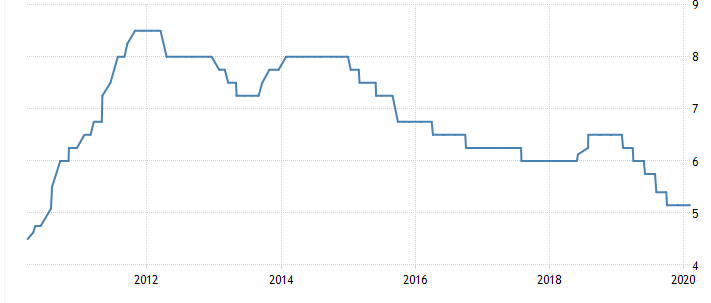CITY UNION BANK CMP 45 fv Rs 1 MARKET CAP 1816 CRORES
Some data about the bank:
CUB has been in operation since more than 100 years and has an enviable track record of profitability and dividend payment in all these years.
Its business has been growing at 30% CAGR and net profits at 31% since past five years.
Book value is around 24 as on Dec 2010.
9M EPS is around 4 and full year EPS expected to be in excess of Rs 5 per share.
HIGH RETURN RATIOS: ROE as on Dec 2010 was 24.7% and ROA was at 1.7%.
Net NPA was down to 0.53% for Dec 2010. Asset quality for the bank remains healthy.
NIMâthe net interest margins as at 9M fy 11 ended Dec 2010 was at 3.5% which was up from 3.3% fo 9M fy 10. The bank is likely to maintain its NIM above 3.25% over the longer term.
Working capital loans form 56% of total advances which would help the bank to tide over higher interest rate cycle. Repricing these working capital loans is much easier for the bank.
CUB is well capitalized at 13.06% as on Dec 2010.
The bank has a network of 236 branches out of which 209 are located in South India and 150 in Tamil Nadu alone. Till Feb 2011, the bank had opened 14 branches out of a license for 62 branches. It aims to open 48 branches till July 2011.
A look at the net profit figures for the past few years shows very good consistent growth.
|
YEAR |
05 |
06 |
07 |
08 |
09 |
10 |
9M FY 11 |
|
NP |
46 |
56 |
72 |
102 |
122 |
152 |
163 |
Equity 40.36 cr face value Rs 1
POSITIVES:
The bank has managed to maintain good balance between growth and quality, without being too aggressive pursuing growth.
With high proportion of advances as working capital loans, the bank has enough room to manage higher interest rate cycle.
Focussed business approach with more emphasis on SME sector.
Healthy asset quality with NPAs of 0.53% as on Dec 2011.
Consistent growth combined with healthy return ratios makes the bank attractive for long term investment.
Any takeover by other banks could provide significant upsides.
NEGATIVES
Lower provisioning to the tune of around 50% as against RBI guidelines of 70%.
Lower percentage of fee based income.
Lower CASA ratio as compared to other comparable banks.
Geographical risk due to higher concentration of bank branches in South India.
There has been an announcement regarding resignation of directors and installation of new directors on bse.


